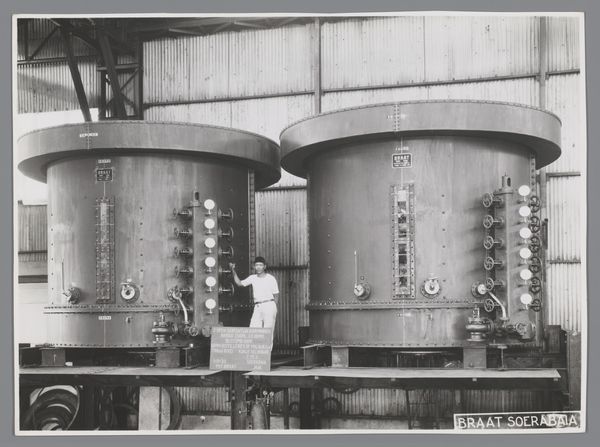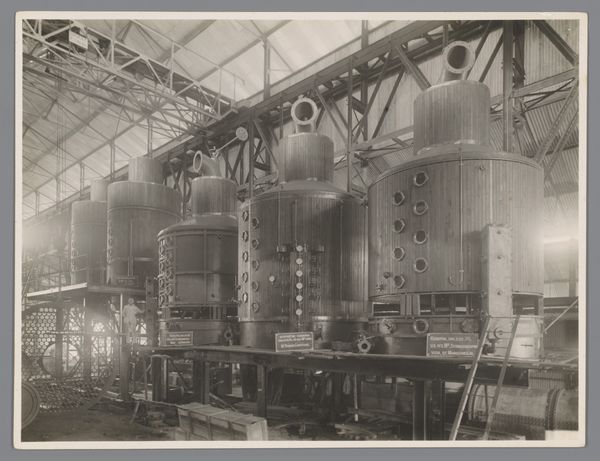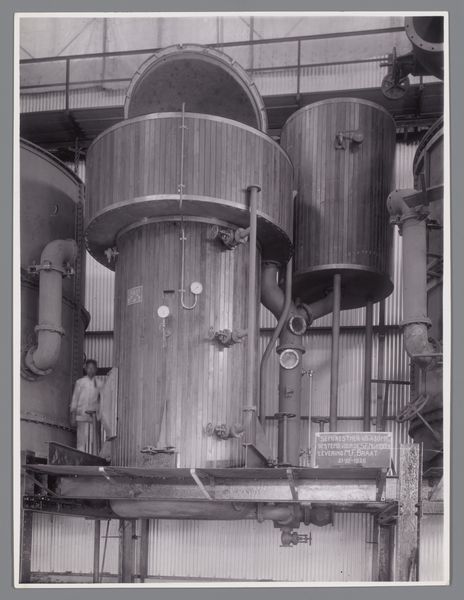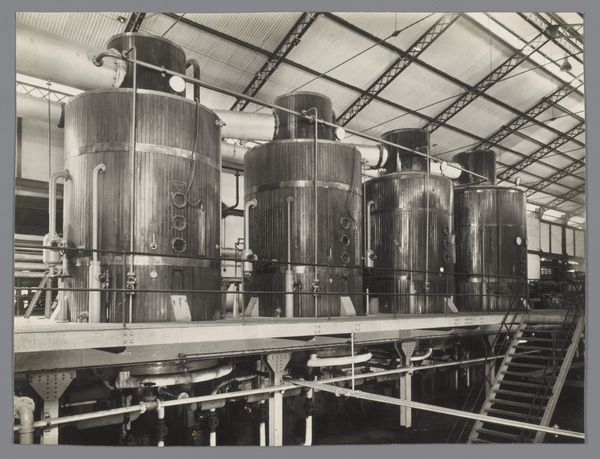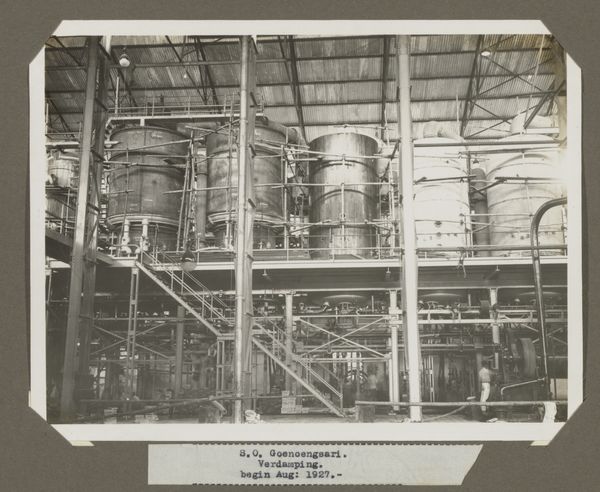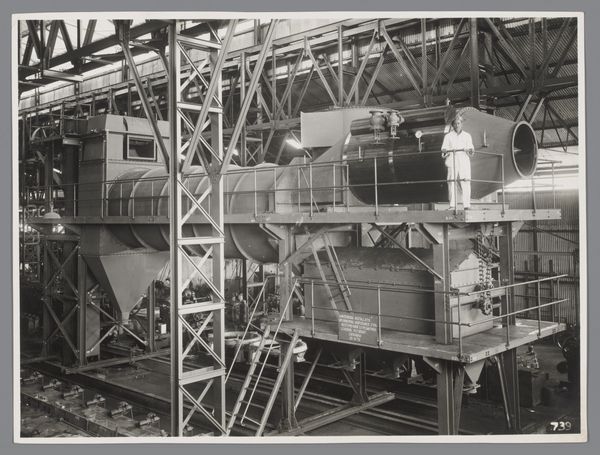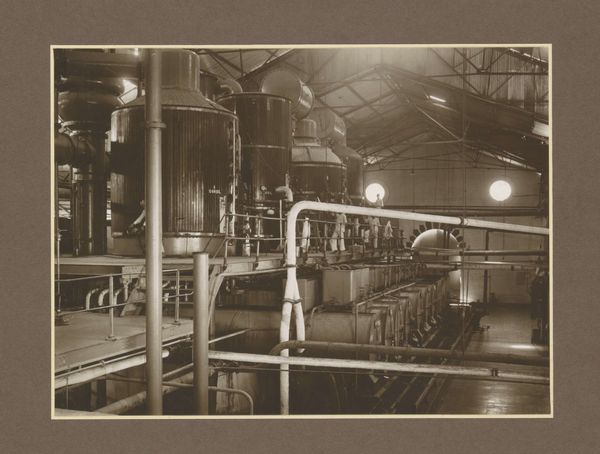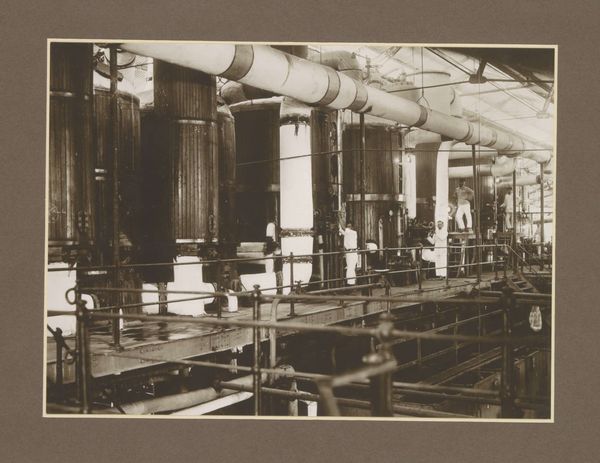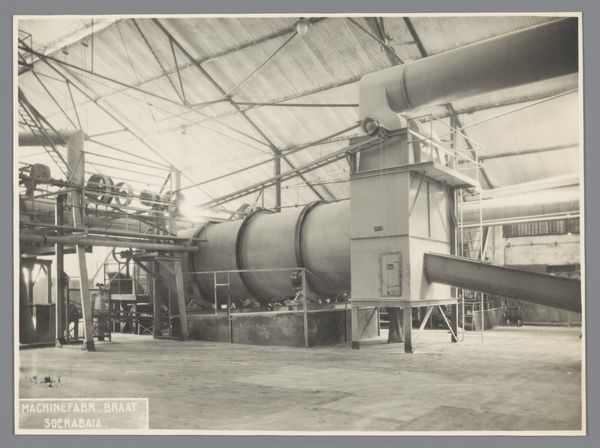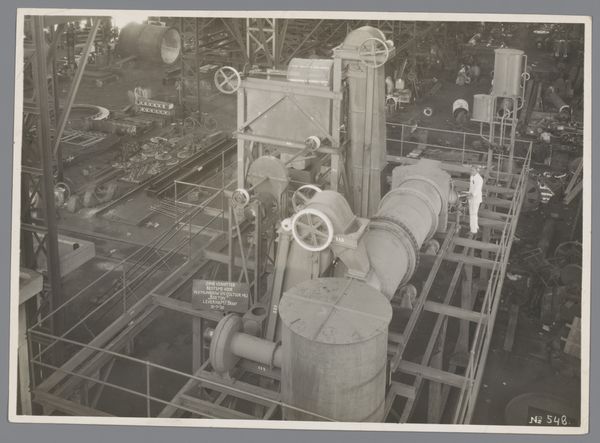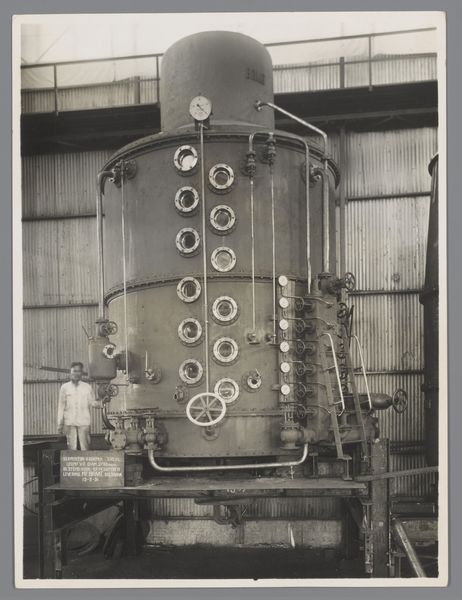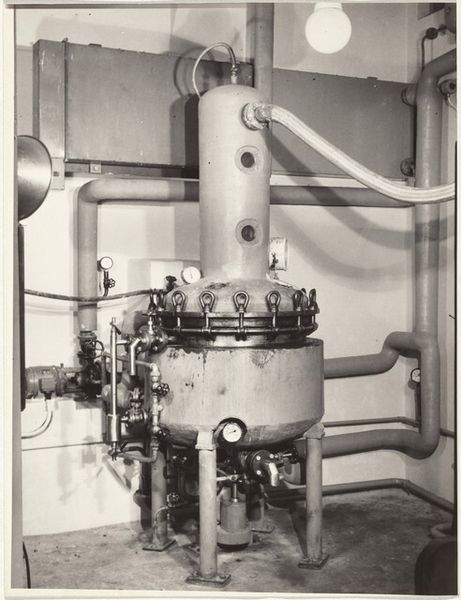
photography
#
still-life-photography
#
photography
#
realism
Dimensions: height 172 mm, width 228 mm
Copyright: Rijks Museum: Open Domain
Editor: This photograph, “Drie kookpannen,” which translates to “Three Cooking Pots,” possibly from 1926, is a gelatin silver print currently housed in the Rijksmuseum. It depicts large industrial structures. What I find immediately striking is the seemingly odd choice of subject. What can you tell me about the context of an image like this? Curator: It’s easy to see it as odd, but in the 1920s, and through much of the 20th century, industry became a symbol of progress and modernity. Think about how photography was being used; the Stieglitz circle elevated everyday subjects, but more importantly, how were industrial spaces portrayed elsewhere? Editor: So, this photograph isn’t necessarily about "cooking pots," but about the symbolic power of industry itself? Was it intended to be seen as beautiful, or powerful? Curator: Precisely! And perhaps both. The very act of photographing these machines, rendering them in sharp detail, elevates their status. But consider where this was exhibited, and for whom. Was this intended for public consumption, displayed in galleries, or was it intended as something else, such as promotional material? These contexts shape our interpretation. The text at the top indicates “N.V. Machinefabriek Braat,” a factory. Editor: So, it's realism, but with a promotional aspect? I hadn't thought of it that way, especially considering the way photography was developing at the time. I initially saw it just as documentary. Curator: And that’s perfectly valid! The fascinating thing is that objects acquire and shed meaning over time. The way that images such as this gain significance tells us much about how a society understands itself, what it chooses to remember and valorize, and who gets to control these narratives. Editor: I’ve never really thought about photography this way; how institutions or even factories can frame meaning through something seemingly straightforward like a photograph of machines. Thanks for this new perspective.
Comments
No comments
Be the first to comment and join the conversation on the ultimate creative platform.
